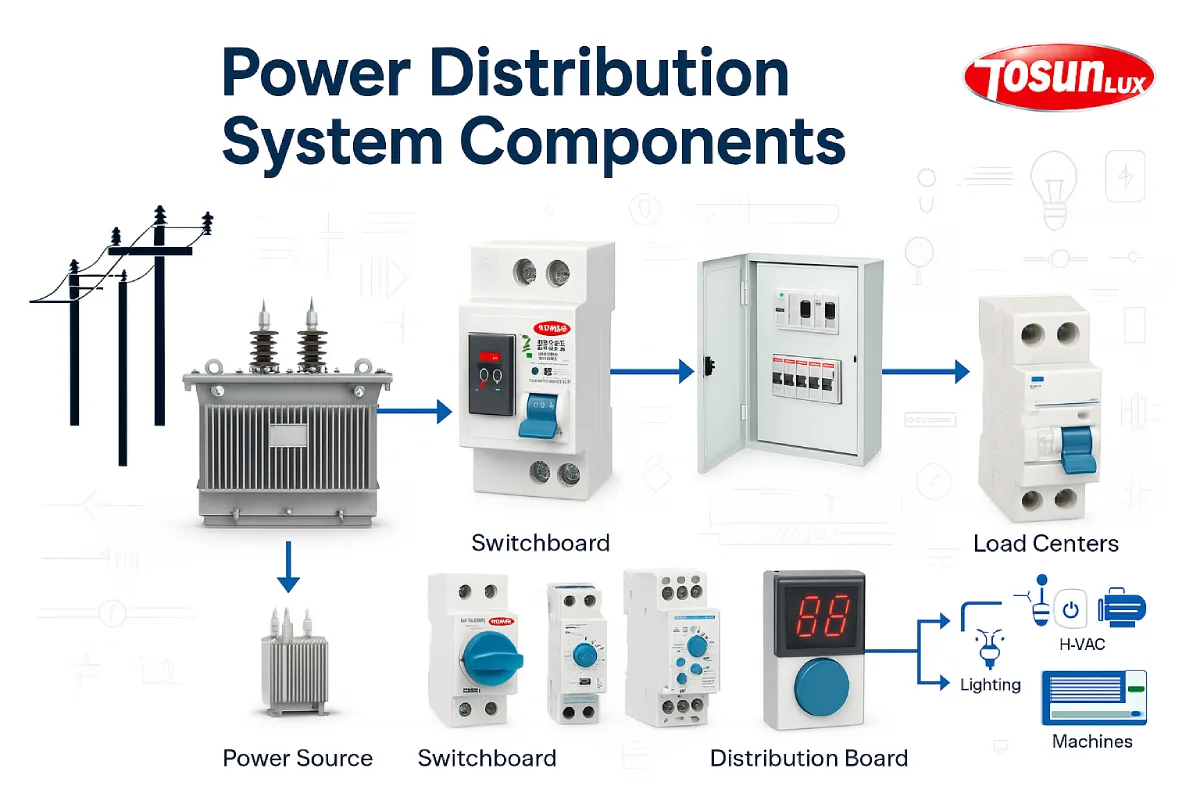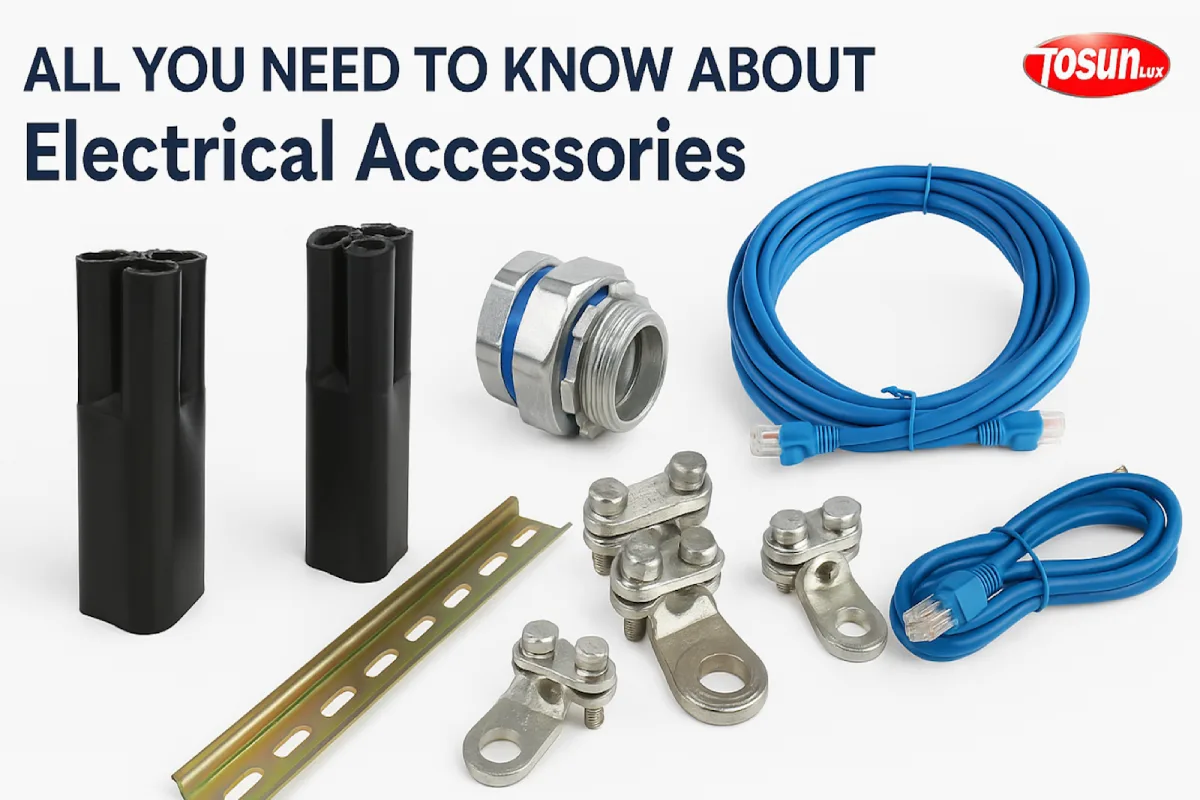Durata dei relè: come le operazioni e la manutenzione quotidiane influiscono sulla longevità
Indice dei contenuti
Attiva/disattivaLa durata di un relè dipende direttamente dal modo in cui viene utilizzato e sottoposto a manutenzione.
L'uso continuativo in condizioni difficili può ridurne la durata, mentre una corretta installazione e una manutenzione tempestiva possono prolungarla notevolmente.
Che si tratti di macchinari industriali complessi o di semplici commutatori di potenza, è fondamentale comprendere il funzionamento dei relè e come prendersene cura.
In questo articolo esamineremo i fattori che influiscono sulla durata dei relè, il modo in cui le diverse applicazioni dei relè influiscono sulle prestazioni e cosa è possibile fare per sfruttare al meglio il proprio investimento.
Spiegazione del relè: cos'è un relè e perché è importante?
Prima di addentrarci in prestazioni e longevità, è importante comprendere le basi.
In parole povere, un relè è un interruttore azionato elettricamente utilizzato per controllare un circuito aprendo o chiudendo i contatti in risposta a un segnale elettrico.
Permette il controllo a bassa potenza di dispositivi ad alta potenza, rendendolo un componente essenziale nei moderni sistemi elettrici.
Esistono diversi tipi di relè, a seconda dell'applicazione: elettromeccanici, a stato solido, temporizzati e altro ancora.
Ogni tipologia ha uno scopo diverso, motivo per cui scegliere quella giusta e comprenderne il funzionamento è importante per l'efficienza e la sicurezza complessive del sistema.

Cosa influenza la durata di vita di un relè?
Un relè medio non si guasta in modo casuale, ma si usura in base a fattori ben precisi. Ecco cosa influenza tipicamente la durata di un relè:
1. Carico di contatto
Maggiore è il carico sui contatti dei relè, maggiore è l'usura. La formazione di archi elettrici durante la commutazione può degradare il materiale dei contatti, soprattutto in caso di frequenti cicli di accensione e spegnimento.
2. Frequenza di commutazione
La commutazione ad alta velocità o il ciclo rapido riducono la durata del relè. Ogni operazione usura leggermente i contatti, quindi più frequentemente viene utilizzato, prima sarà necessario sostituirlo.
3. Temperatura ambiente
Il caldo o il freddo estremi possono danneggiare i componenti interni di un relè. L'esposizione prolungata ad alte temperature, in particolare, accelera la rottura dell'isolamento e la corrosione dei contatti.
4. Urti e vibrazioni meccaniche
Le vibrazioni in ambienti industriali o su macchinari mobili (come attrezzature agricole o da cantiere) possono causare affaticamento meccanico nei componenti dei relè.
5. Qualità dell'alimentazione elettrica
Irregolarità di tensione, come picchi o sovratensioni, possono ridurre la durata dei relè. Le fluttuazioni di tensione aumentano lo stress sulle bobine dei relè e sui meccanismi interni.
Operazioni di relay in ambienti reali
Il modo in cui i relè vengono utilizzati nei diversi ambienti influenza significativamente le prestazioni e la durata. Analizziamo alcune applicazioni comuni dei relè:
Attrezzature industriali
Gli impianti industriali utilizzano spesso relè per il controllo dei motori, la protezione da sovraccarico e l'automazione di processo. Questi ambienti tendono ad essere difficili, ricchi di polvere, vibrazioni e carichi elevati. I relè in tali contesti devono essere robusti e affidabili.
Sistemi di refrigerazione e HVAC
Nei sistemi HVAC, i relè commutano costantemente compressori, ventole e termostati. Un relè affidabile garantisce prestazioni costanti e previene guasti al sistema.
Anche la scelta del contattore giusto per le applicazioni dell'unità AC può avere un impatto sia sui costi che sulla longevità.
Monitoraggio della potenza trifase
È qui che dispositivi come il relè di tensione trifase TOSUNLUX TRV8 brillano.
Progettato per monitorare la sequenza di fase, i guasti di fase, le condizioni di sovratensione e sottotensione e l'asimmetria di tensione, il TRV8 garantisce la sicurezza del sistema e un funzionamento ininterrotto.
Il suo tempo di reset è di 1000 ms e chiaro Indicatori LED contribuiscono a migliorare le prestazioni e l'affidabilità dei relè.
Migliori pratiche per massimizzare la durata dei relè
Ora che sappiamo cosa riduce la durata di un relè, ecco alcuni passaggi che puoi seguire per prolungarla:
1. Utilizzare il relè giusto per l'applicazione
Non tutti i relè sono progettati per svolgere lo stesso compito.
Ad esempio, i relè temporizzati sono ideali per il sequenziamento del carico, mentre i relè di monitoraggio della tensione come il TRV8 sono più adatti per proteggere apparecchiature sensibili.
Se si lavora con motori o sistemi HVAC, la scelta del contattore adatto per l'unità AC, in particolare uno con una potenza nominale adatta al carico, come un contattore modulare da 25 A, è fondamentale per garantire prestazioni a lungo termine.
2. Controllo della frequenza di commutazione
Evitare commutazioni eccessive o non necessarie. Programmare i controllori o i PLC per ridurre i cicli di commutazione ove possibile.
3. Monitorare e mantenere le connessioni
Terminali allentati e fili corrosi causano un accumulo di calore, che può deteriorare i contatti dei relè. Ispezioni regolari aiutano a individuare questi problemi in anticipo.
4. Mantenere pulito il relè
Polvere e sporcizia possono causare guasti ai contatti o isolare i componenti, causando surriscaldamento. Mantenere puliti il relè e il suo alloggiamento previene un'usura inutile.
5. Fornire protezione contro le sovratensioni
Installare dispositivi di protezione da sovratensioni per prevenire danni causati da picchi di tensione, soprattutto nelle aree soggette a instabilità elettrica.
Relè temporali e coerenza delle prestazioni
Un tempo produttore di relè come TOSUNLUX sa come progettare relè che durano nel tempo.
Ad esempio, il TRV8 offre opzioni di risposta ritardata (da 0,1 a 10 secondi, a seconda del modello) che aiutano a prevenire commutazioni non necessarie in risposta a brevi fluttuazioni di tensione.
Ciò non solo protegge il sistema, ma aumenta anche la durata di vita del relè.
Le protezioni integrate contro sovratensione, sottotensione e asimmetria lo rendono una scelta eccellente per i sistemi mission-critical in cui anche piccoli guasti possono causare seri problemi.
La scelta di un partner affidabile è importante
Le prestazioni del relè non dipendono solo dalle specifiche del prodotto, ma anche dall' produttore di relè.
TOSUNLUX è un nome affidabile nel settore e offre un'ampia gamma di relè di tensione e temporizzati, noti per la qualità, la coerenza e l'innovazione.
Loro Modello TRV8 è particolarmente adatto per applicazioni industriali, mobili e agricole.
Grazie alle sue funzionalità di monitoraggio avanzate e alla configurazione intuitiva tramite manopole regolabili, è progettato per durare e funzionare anche sotto pressione.
Segnali che un relè sta per finire la sua vita
Anche con un'attenta manutenzione, tutti i relè prima o poi si usurano. Ecco alcuni segnali comuni a cui prestare attenzione:
- Ritardi di commutazione o risposta incoerenti
- Surriscaldamento o odore di bruciato
- Corrosione visibile o corrosione sui contatti
- Ronzii o clic insoliti
- Gli indicatori LED non si comportano come previsto
Sostituire tempestivamente un relè guasto può prevenire guasti di sistema molto più gravi, facendo risparmiare tempo e denaro.
Prestazioni dei relè: piccolo dispositivo, grande impatto
I relè possono sembrare piccoli componenti, ma le loro prestazioni influiscono sull'intero sistema elettrico.
Un relè usurato o scarsamente manutenuto può causare arresti del sistema, danni alle apparecchiature e persino rischi per la sicurezza.
Ecco perché è essenziale comprendere il funzionamento dei relè e tenerne sotto controllo la durata utile, non solo per ingegneri e tecnici, ma per qualsiasi azienda che faccia affidamento su sistemi di alimentazione stabili.
Considerazioni finali: durata del relè
Quando si tratta di estendere la durata di vita dei relè, la conoscenza, la prevenzione e selezione adeguata dell'attrezzatura sono i tuoi alleati più forti.
Le operazioni quotidiane, le condizioni ambientali e la qualità dei componenti sono tutti fattori che giocano un ruolo importante.
Che si utilizzi un semplice relè per la commutazione o un'unità intelligente di monitoraggio della tensione come il TOSUNLUX TRV8, l'attenzione ai dettagli può fare la differenza.
Mantenete i vostri relè in perfette condizioni, scegliete il modello giusto per il lavoro e lavorate con produttori affidabili: otterrete prestazioni migliori, meno guasti e un sistema complessivamente più duraturo.
Tel: +86-577-88671000
E-mail: ceo@tosun.com
Skype: tosunelectric
WeChat: +86-139 6881 9286
WhatsApp: +86-139 0587 7291
Indirizzo: Stanza n. 1001 Wenzhou Fortune Center, Station Road, Wenzhou, Cina
RICHIEDI UN PREVENTIVO
Mandaci un messaggio su WhatsApp
 : +86-139 0587 7291
: +86-139 0587 7291 Inglese
Inglese Spagnolo
Spagnolo Russo
Russo Francese
Francese arabo
arabo Portoghese del Brasile
Portoghese del Brasile Ucraino
Ucraino Turco
Turco Polacco
Polacco Paesi Bassi
Paesi Bassi Italiano
Italiano Bahasa Indonesia
Bahasa Indonesia Hindi
Hindi اردو
اردو sfacciato
sfacciato Հայերեն
Հայերեն ไทย
ไทย Mongolo
Mongolo Fascino
Fascino Squalo
Squalo Ellenico
Ellenico



